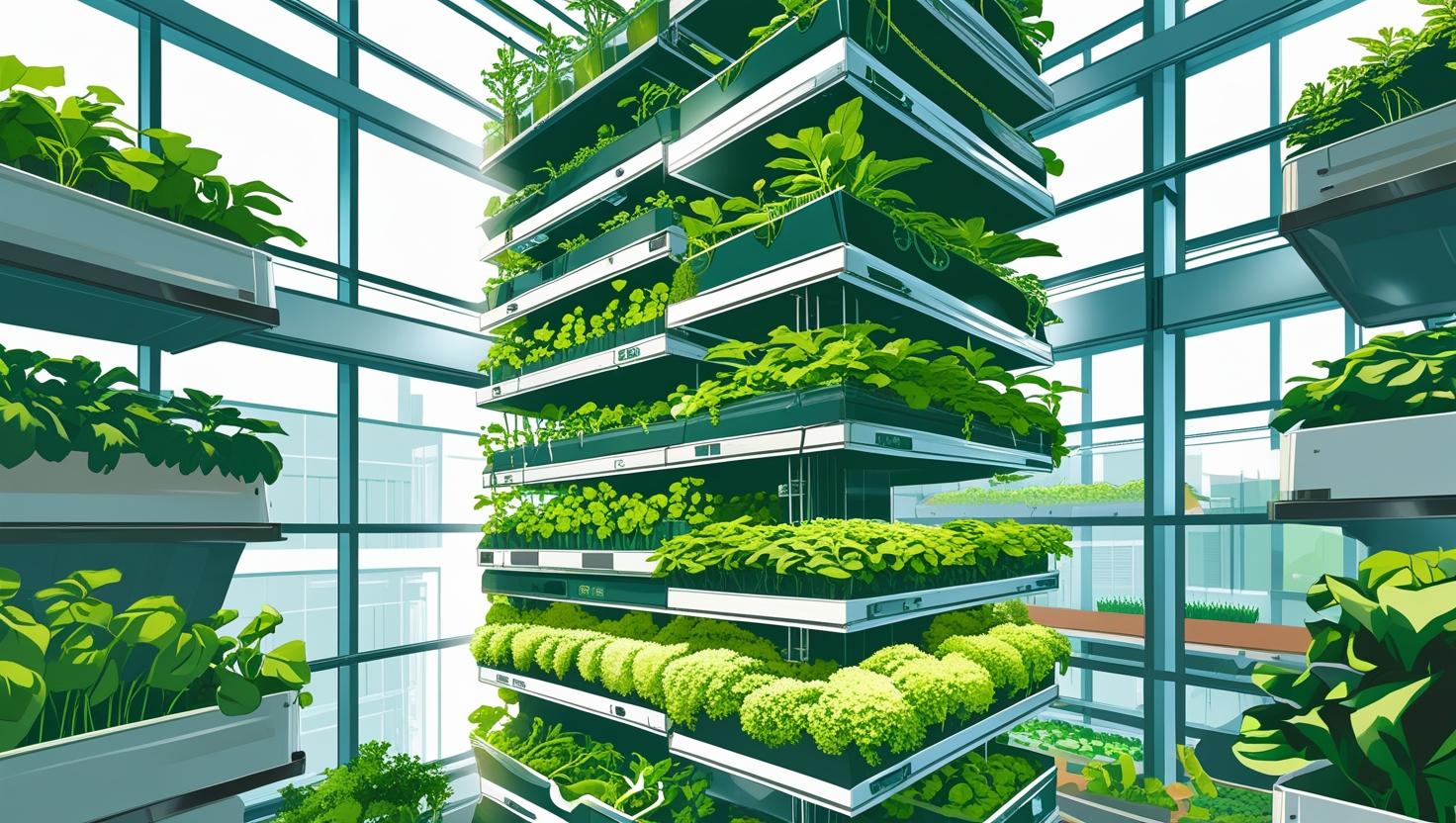The vertical farming market is undergoing a remarkable transformation, driven by the increasing demand for sustainable food production, technological innovation, and the growing challenges of traditional agriculture. As global populations rise and urbanization accelerates, vertical farming has emerged as a powerful solution to address food security, resource efficiency, and climate resilience. By combining controlled environment agriculture (CEA) with advanced technologies such as hydroponics, aeroponics, aquaponics, artificial intelligence, and automation, vertical farming is reshaping how, where, and when food is grown.
Download PDF Brochure @ https://www.marketsandmarkets.com/pdfdownloadNew.asp?id=221795343

Rising Demand for Sustainable Food Production
One of the key drivers of vertical farming’s global growth is the rising demand for sustainable and reliable food sources. Conventional farming is heavily dependent on arable land, seasonal cycles, and water availability, all of which are under strain due to climate change and population growth. Vertical farming eliminates many of these constraints by enabling year-round cultivation in stacked layers, independent of external weather conditions. By using up to 90% less water than traditional farming and reducing the need for pesticides, vertical farming provides a sustainable approach to meet urban food demands while minimizing environmental impact.
Urbanization and Food Security Challenges
With more than two-thirds of the global population projected to live in urban areas by 2050, the need to bring food production closer to consumers is intensifying. Vertical farming addresses this challenge by situating farms within or near urban centers, reducing transportation costs, supply chain risks, and food spoilage. This urban integration of farming supports local food systems, enhances food security, and caters to consumer preferences for fresh, locally grown produce. Retailers, restaurants, and households increasingly rely on vertically farmed vegetables and leafy greens that can be harvested and delivered within hours.
Technological Innovation in Controlled Environment Agriculture
The rapid advancement of controlled environment agriculture technologies is propelling the vertical farming market forward. Precision farming tools such as IoT sensors, AI-driven crop monitoring, and climate control systems enable growers to fine-tune temperature, humidity, CO₂ levels, and nutrient delivery. These innovations ensure optimal growth conditions for crops, maximize yield, and minimize waste. Automation and robotics are streamlining seeding, harvesting, and packaging processes, making vertical farms more efficient and scalable. Moreover, LED lighting technology continues to improve, offering tailored light spectrums for photosynthesis while reducing energy consumption.
Diverse Crop Cultivation and Market Expansion
While leafy greens, herbs, and microgreens dominate the vertical farming market due to their short growth cycles and high value, there is growing experimentation with other crops such as strawberries, tomatoes, peppers, and even staple grains. Advances in plant science and cultivation systems are enabling vertical farms to diversify their offerings, which in turn expands market potential and consumer appeal. Partnerships between vertical farming companies, food retailers, and hospitality chains are helping introduce these products to broader markets, making vertical farming a mainstream food source rather than a niche concept.
Role of Artificial Intelligence and Data Analytics
Artificial intelligence and data analytics are becoming central to the growth outlook of vertical farming. Machine learning algorithms analyze vast amounts of sensor data to optimize crop growth, predict harvest times, and detect anomalies in plant health. Predictive models help farmers make informed decisions, while digital twins simulate farm operations to test variables before implementation. AI-driven platforms also enable resource optimization, such as reducing water and energy use without compromising yield. These capabilities make vertical farming smarter, more predictable, and increasingly profitable.
Investment, Partnerships, and Commercialization
The vertical farming industry is witnessing strong investment inflows from venture capitalists, agri-tech companies, and institutional investors who recognize its long-term potential. Partnerships with supermarkets, foodservice providers, and urban developers are accelerating commercialization and scaling of vertical farms. Governments are also supporting the sector through incentives, sustainability programs, and smart city initiatives. This convergence of financial backing, policy support, and commercial adoption is driving significant growth opportunities for vertical farming across global markets.
Regional Growth Dynamics
North America and Europe currently lead the vertical farming market, supported by strong technology adoption, high consumer awareness of sustainable foods, and government initiatives promoting urban agriculture. Asia-Pacific, however, is emerging as the fastest-growing region due to rapid urbanization, limited arable land, and high population density. Countries such as Japan, Singapore, and China are pioneering large-scale vertical farming projects to secure food supply and reduce import dependence. The Middle East is also investing in vertical farming as a solution to water scarcity and desert climate challenges, aligning with its food security strategies.
Addressing Energy and Cost Challenges
Despite its potential, vertical farming faces challenges related to high energy costs and capital investment requirements. Artificial lighting, climate control systems, and automation technologies can make vertical farming energy-intensive, impacting profitability. However, ongoing innovation in renewable energy integration, energy-efficient LEDs, and smart climate systems is steadily reducing operational costs. As technology matures and scales, economies of scale are expected to make vertical farming more cost-competitive with traditional agriculture.
Future Outlook of Vertical Farming
The future of vertical farming lies in its ability to integrate with broader food ecosystems, sustainability initiatives, and smart city planning. As digital agriculture advances, vertical farms will increasingly adopt fully automated, AI-powered systems that optimize every aspect of production. Integration with renewable energy, circular water systems, and waste-to-resource technologies will further enhance sustainability. In the coming decade, vertical farming is likely to move beyond leafy greens and diversify into fruits, staple crops, and even pharmaceutical plants.
Explore In-Depth Semiconductor & Electronics Market Research – https://www.marketsandmarkets.com/semiconductorand-electonics-market-research-87.html
See Latest Semiconductor Reports:
Farm Management Software Market by Application (Precision Farming, Livestock, Aquaculture, Forestry, Smart Greenhouses), Offering (On-cloud, On-premise, Data Analytics Services), Farm Size, Farm Production and Region – Global Forecast to 2029
Smart Irrigation Market by System Type (Weather-based, Sensor-based), Controllers, Sensors (Soil Moisture Sensors, Temperature Sensors, Rain/Freeze Sensors, Fertigation Sensors), Water Flow Meters, Greenhouses, Open Fields – Global Forecast to 2030
